-
Syria faces food crisis as wheat shortage deepens
Syria’s ongoing wheat harvest is not large enough to feed people living in areas controlled by the government, researchers have warned. Syrian farmers sold 450,000 tons of wheat last year — less than half the quantity needed to supply government-controlled areas of the country with enough bread. In total, the country will need around one millions tons of wheat to avoid a hunger crisis. Before the war, Syria used to produce five million tons of wheat pear year. Out of these, two million tons were consumed in the country while the rest was either sold as exports or stored in a stockpile. This stock was aimed at meeting Syria’s food needs for five years but is now nearly depleted.
-
-
Assessing crop damage after extreme weather
The Philippines is host to six to nine tropical cyclones per year since 1970, and a citizenry that consumes more rice than it produces. The Philippines has for many years augmented its homegrown supply of rice with imports based on seasonal climate forecasts and agricultural production surveys. But import orders must be modified on the fly when extreme weather events exact a heavier toll on production than expected. New method to track the impact of typhoons and other natural disasters could enable more precise, timely delivery of food aid.
-
-
Food crisis in northeast Nigeria drives youth to radicalize, join Boko Haram: UN
Urgent action is needed to provide farming and livelihood support to 385,000 people in parts of Nigeria’s northeast where food insecurity is rampant, the UN Food and Agriculture Organization (FAO) said. The UN agency noted that more than three million people are affected by acute food insecurity in Borno, Yobe, and Adamawa States. Failure to rebuild the rural economy will translate into lack of employment opportunities with possible harmful consequences including youth radicalization and enrolment into armed groups, resulting in continued civil unrest.
-
-
New Prize in Food and Agriculture Sciences announced
The National Academy of Sciences announced the creation of a new prize, the NAS Prize in Food and Agriculture Sciences, to be presented annually beginning in 2017 with an award of $100,000. The NAS Prize in Food and Agriculture Sciences will recognize research by a mid-career scientist at a U.S. institution who has made an extraordinary contribution to agriculture or to the understanding of the biology of a species fundamentally important to agriculture or food production.
-
-
Gauging the impact of climate change on U.S. agriculture
To assess the likely impact of climate change on U.S. agriculture, researchers typically run a combination of climate and crop models that project how yields of maize, wheat, and other key crops will change over time. But the suite of models commonly used in these simulations, which account for a wide range of uncertainty, produces outcomes that can range from substantial crop losses to bountiful harvests. These mixed results often leave farmers and other agricultural stakeholders perplexed as to how best to adapt to climate change. Researchers have now devised a way to provide these stakeholders with the additional information they need to make more informed decisions. The new approach tracks key factors affecting crop yields, enabling early adaptation.
-
-
Better soil data is key for future food security
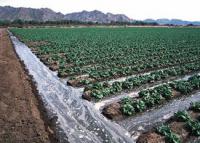
To project how much food can be produced in the future, researchers use agricultural models that estimate crop yield, or how much of a crop can be produced in a certain amount of space. These models take into account factors like climate and weather variability, irrigation, fertilizer, and soil type. A new study shows that the type of soil used in such a model can often outweigh the effects of weather variability — such as year-to-year changes in rainfall and temperature.
-
-
California droughts caused mostly by changes in wind, not moisture

Droughts in California are mainly controlled by wind, not by the amount of evaporated moisture in the air, new research has found. Their analysis showed that although moisture evaporated from the Pacific Ocean is the major source for California precipitation, the amount of water evaporated did not strongly influence precipitation in California, except in the cases of very heavy flooding. The research increases the understanding of how the water cycle is related to extreme events and could eventually help in predicting droughts and floods.
-
-
Crop breeding is not keeping pace with climate change
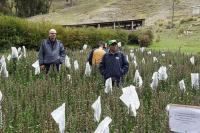
Crop yields will fall within the next decade due to climate change unless immediate action is taken to speed up the introduction of new and improved varieties, experts have warned. The researchers focused on maize in Africa but the underlying processes affect crops across the tropics.
-
-
Growing demand for bioenergy threatens global food supply
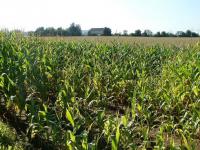
As countries around the world look for ways to reduce their use of fossil fuels, the growing demand for bioenergy runs the risk of threatening the global food supply. Researchers have developed a certification scheme for biomass resources designed to incorporate food security, to help ensure people in affected regions of the world can continue to put food on their tables.
-
-
Addressing global food system challenges
Agriculture now produces more than enough calories to meet basic human dietary needs worldwide. Despite this seeming abundance, one out of eight people do not have access to sufficient food. A new study presents a set of strategies to address these complex challenges of producing food for a growing global population, while reducing environmental impacts and increasing resilience in the face of climate change.
-
-
Mapping water use of America’s water resources
Water is one of our nation’s most important natural resources, one that is long been considered inexhaustible. Yet changes in land use, climate, and population demographics are placing unprecedented demands on America’s water supplies. As droughts rage and aquifers dwindle, people may wonder: Is there enough water to meet all our needs?
-
-
CO2 fertilization is greening the Earth
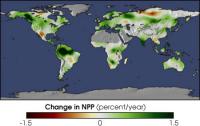
A new, comprehensive study shows a significant greening of a quarter to one-half of the Earth’s vegetated lands. The greening represents an increase in leaves on plants and trees. Green leaves produce sugars using energy in the sunlight to mix carbon dioxide (CO2) drawn in from the air with water and nutrients pumped in from the ground.
-
-
Global warming could help crops’ productivity
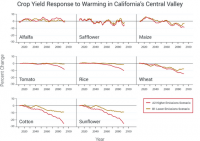
Many scientists fear that global warming will hit staple food crops hard, with heat stress, extreme weather events, and water shortages. On the other hand, higher levels of carbon dioxide — the main cause of ongoing warming — is known to boost many plants’ productivity, and reduce their use of water. So, if we keep pouring more CO2 into the air, will crops fail, or benefit? A new study tries to disentangle this complex question. It suggests that while greater warmth will reduce yields of some crops, higher CO2 could help mitigate the effects in some regions, unless other complications of global warming interfere.
-
-
Soil’s carbon storage could help limit impact of climate change
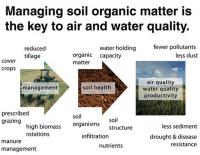
Soils currently lock away around 2.4 trillion tons of greenhouse gases, which are stored underground as stable organic matter. Researchers say the world’s soils could store an extra eight billion tons of greenhouse gases, helping to limit the impacts of climate change. Growing crops with deeper root systems, using charcoal-based composts, and applying sustainable agriculture practices could help soils retain the equivalent of around four-fifths of annual emissions released by the burning of fossils fuels, the researchers say.
-
-
Paper-based test to help prevent food poisoning
The foodborne bacteria Salmonella alone led to nearly 20,000 hospitalizations and almost 400 deaths in 2013. Economists estimate that the treatment of all these patients and the related productivity losses cost more than $3 billion annually. And those numbers account for just one of the fifteen pathogens responsible for most of the food poisoning cases. Scientists have developed a simple, paper-based test that could help detect pathogens hitchhiking on food before they reach store shelves, restaurants and, most importantly, our stomachs.
-
- All
- Regional
- Water
- Biometrics
- Borders/Immig
- Business
- Cybersecurity
- Detection
- Disasters
- Government
- Infrastructure
- International
- Public health
- Public Safety
- Communication interoperabillity
- Emergency services
- Emergency medical services
- Fire
- First response
- IEDs
- Law Enforcement
- Law Enforcement Technology
- Military technology
- Nonlethal weapons
- Nuclear weapons
- Personal protection equipment
- Police
- Notification /alert systems
- Situational awareness
- Weapons systems
- Sci-Tech
- Sector Reports
- Surveillance
- Transportation
Advertising & Marketing: advertise@newswirepubs.com
Editorial: editor@newswirepubs.com
General: info@newswirepubs.com
2010-2011 © News Wire Publications, LLC News Wire Publications, LLC
220 Old Country Road | Suite 200 | Mineola | New York | 11501
Permissions and Policies
Editorial: editor@newswirepubs.com
General: info@newswirepubs.com
2010-2011 © News Wire Publications, LLC News Wire Publications, LLC
220 Old Country Road | Suite 200 | Mineola | New York | 11501
Permissions and Policies
